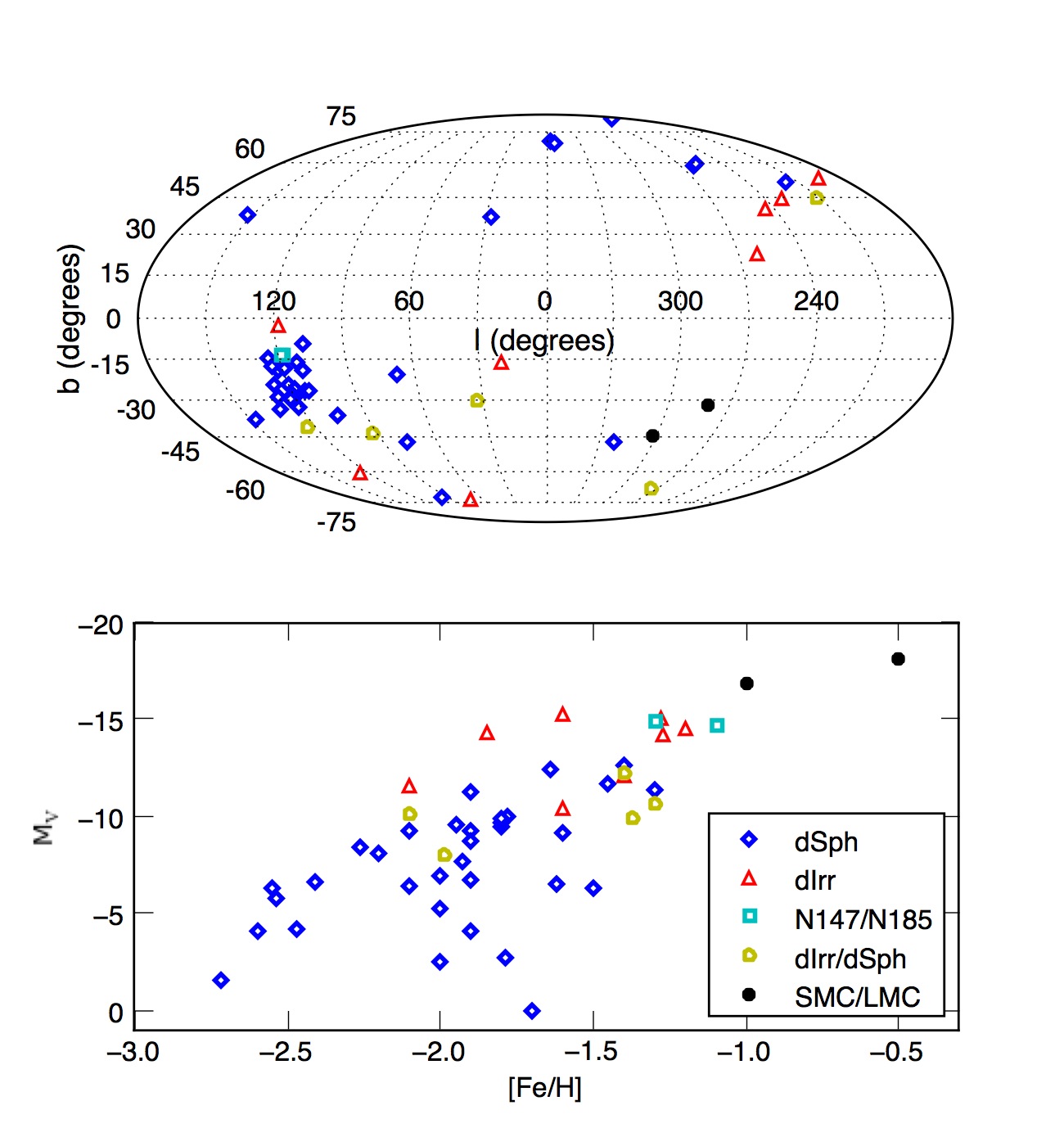DUSTiNGS
DUST in Nearby Galaxies with Spitzer
The DUSTiNGS survey searched 50 nearby dwarf galaxies for dusty evolved stars. The targets span a large range in metal content (from about 0.2% to 8% of solar). You can see the all-sky map of the DUSTiNGS targets and their properties in Fig. 1 from Boyer et al. (2015a).
Data Summary: Spitzer imaging: 3.6 and 4.5 microns, 8 or more epochs spanning several years. Hubble imaging: F127M, F139M, F153M filters. Links to data are noted in each paper summary below.
Paper I describes the targets and the publicly available Spitzer data products. Both the images and the photometric catalogs are available to download at IRSA and CDS.
Paper II describes the discovery of more than 500 metal-poor dusty AGB stars. Preliminary results suggest that dust forms efficiently at least down to 0.6% solar metallicity. The catalog of dusty AGB candidates is available at CDS.
Paper III describes the spatial distribution of AGB stars and measures the infrared tip of the Red Giant Branch. We found that AGB stars are well mixed with older populations, possibly indicating inside-out growth.
Paper IV describes followup Hubble imaging with medium-band infrared filters that can distinguish carbon and oxygen-rich AGB stars. We found that, even at low metallicity, dust can form around massive oxygen-rich stars. This suggests that AGB stars can contribute dust to the ISM as early as 30 Myr they form, and may thus be a significant dust source at high redshift. The catalog of carbon and oxygen-rich AGB stars can be found on CDS.
Paper V describes followup timeseries Spitzer observations and provides the first infrared lightcurves of dusty AGB stars. We found no strong metallicity dependence in the infrared period-luminosity relationship. The lightcurves can be downloaded from CDS.
Additional follow-up programs using JWST and the Hubble are planned.

Fig. 1 from Boyer et al. (2015a)
Team: Martha L. Boyer (PI, NASA GSFC), K. B. W. McQuinn (U. Minnesota), Steve Goldman (STScI), P. Barmby (U. Western Ontario), A. Z. Bonanos (National Obs. of Athens, Gr), R. D. Gehrz (U. Minnesota), K. D. Gordon (STScI), M. A. T. Groenewegen (Royal Obs. of Belgium), E. Lagadec (Obs. de la Côte d'Azure), D. Lennon (ESA), M. Marengo (Iowa State U.), I. McDonald (U. Manchester), M. Meixner (STScI), E. Skillman (U. Minnesota), G. C. Sloan (Cornell U.), G. Sonneborn (NASA GSFC), J. Th. van Loon (Keele U.), and A. Zijlstra (U. Manchester).